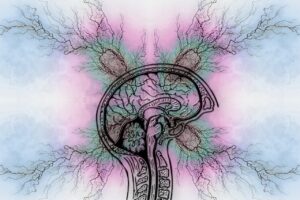New brain research suggests why some teenagers develop nicotine addictions
University experts have highlighted levels of grey matter in the brain could be linked to a desire to start smoking from a young age.
Research, which was published this afternoon by a team of scientists from Warwick and Cambridge University in the UK and Fudan University in China in the journal Nature Communications, discovered levels of grey matter in two parts of the brain could lead to young people developing a smoking or nicotine addiction.
Experts analysed brain imaging and behavioural data of over 800 young people at the ages of 14, 19 and 23. They found that, on average, teenagers who started smoking by 14-years-old had less grey matter, brain tissue that processes information, and contains all of the organs neurons, in a section of the left frontal lobe linked to decision-making and rule-breaking.
In addition, those who began smoking at 19 also had less grey matter in the left side of their brain at 14, indicating a potential causal influence.
Data in 23-year-olds displayed grey matter volume in the right prefrontal cortex shrank at a faster pace in those who continued to smoke, suggesting an influence of smoking itself on prefrontal function.
Lead author of the study, Professor Tianye Jia from Fudan University, said: ‘Less grey matter in the left frontal lobes is linked to behaviours that increase the likelihood of smoking in adolescence.
‘Smokers then experience excessive loss of grey matter in the right frontal lobes, which is linked to behaviours that reinforce substance use. This may provide a causal account of how smoking is initiated in young people, and how it turns into dependence.’
Another important factor that was uncovered, was scientists found the loss of grey matter in the right side of the brain speeds up only after someone has started smoking – this region is linked to the seeking of sensations.
‘Smoking is perhaps the most common addictive behaviour in the world, and a leading cause of adult mortality,’ said Professor Trevor Robbins, co-senior author of the study. ‘The initiation of a smoking habit is most likely to occur during adolescence. Any way of detecting an increased chance of this, so we can target interventions, could help save millions of lives.’
Image: Andres Siimon
















